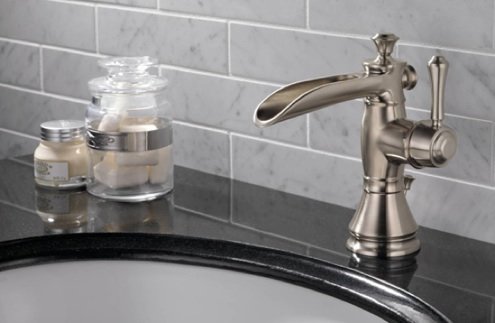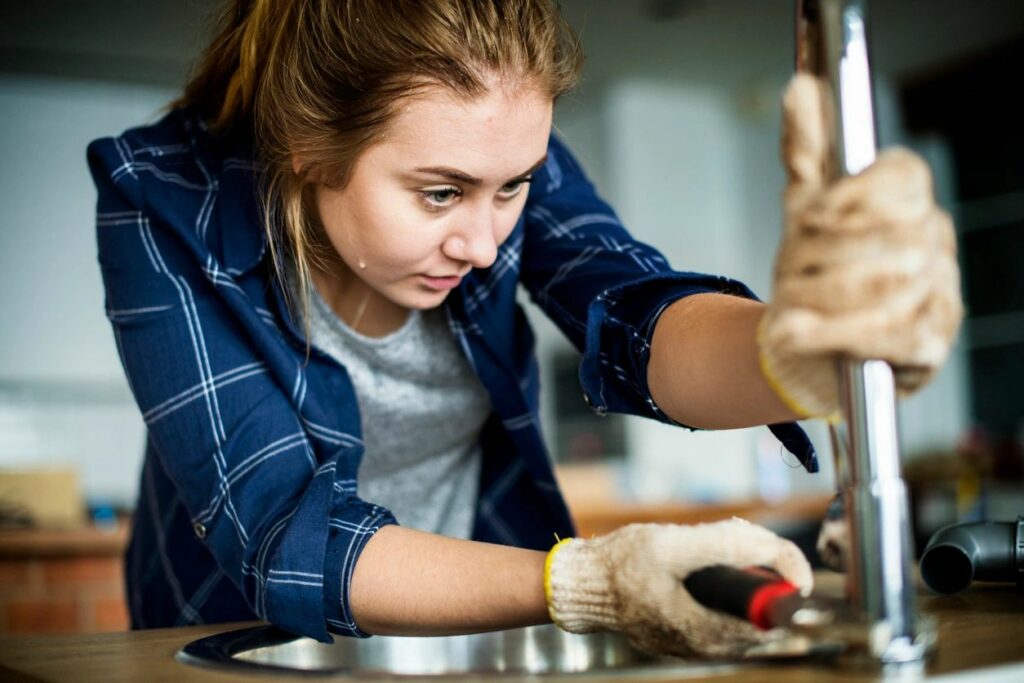Nearly everybody has their own unique rationale on the subject of Why Is It Important To Fix Your Leaking Tap/Faucet?.

Trickling faucets may feel like a minor trouble, yet their impact exceeds simply the nuisance of the audio. From wasting water to incurring unnecessary monetary prices and health risks, disregarding a leaking tap can bring about numerous effects. In this article, we'll look into why it's critical to address this usual house problem immediately and effectively.
Wastage of Water
Ecological Impact
Leaking taps contribute considerably to water waste. According to the Epa (EPA), a single tap dripping at one drip per second can waste greater than 3,000 gallons of water per year. This not only stress water resources but additionally affects ecosystems and wildlife dependent on them.
Financial Prices
Raised Water Bills
Beyond the environmental impact, leaking taps can blow up water expenses considerably. The accumulated wastage gradually equates right into higher energy expenses, which might have been prevented with prompt repair services.
Prospective Building Damage
Moreover, long term trickling can lead to harm to components and surface areas surrounding the faucet. Water build-up can trigger discoloration, deterioration, and also architectural issues if left unattended, leading to extra fixing costs.
Health Issues
Mold and Mildew Growth
The constant presence of moisture from a dripping tap creates an optimal setting for mold and mildew and mildew growth. These fungis not just jeopardize indoor air quality but additionally posture wellness dangers, particularly for people with respiratory system conditions or allergies.
Waterborne Conditions
Stagnant water in dripping taps can end up being a breeding ground for microorganisms and various other pathogens, raising the danger of waterborne diseases. Pollutants such as Legionella bacteria prosper in stationary water, possibly causing serious health problems when consumed or inhaled.
Do it yourself vs. Professional Fixing
Advantages and disadvantages of Do It Yourself Repair
While some may try to fix a dripping faucet themselves, do it yourself fixings come with their own collection of obstacles. Without correct knowledge and devices, do it yourself efforts can aggravate the concern or lead to incomplete repair work, extending the trouble.
Advantages of Working With a Specialist Plumber
Working with a specialist plumber makes sure that the underlying root cause of the trickling tap is attended to successfully. Plumbing technicians possess the competence and equipment to diagnose and repair tap problems effectively, saving time and decreasing the danger of further damages.
Step-by-Step Overview to Repairing a Dripping Faucet
Devices Required
Prior to attempting to deal with a leaking faucet, collect the necessary devices, including a flexible wrench, screwdrivers, replacement components (such as washers or cartridges), and plumber's tape.
Usual Faucet Issues and Their Solutions
Recognize the type of faucet and the details issue triggering the drip. Common troubles consist of worn-out washing machines, rusty valve seats, or defective O-rings. Describe maker instructions or on-line tutorials for detailed advice on repair work.
Preventive Measures
Regular Upkeep Tips
To stop trickling taps, do routine maintenance such as cleansing aerators, checking for leakages, and changing damaged parts without delay. Additionally, think about setting up water-saving gadgets or updating to a lot more reliable components.
Value of Prompt Repairs
Addressing dripping taps as quickly as they're observed avoids further water wastefulness and possible damage, ultimately conserving both water and money in the long run.
Influence On Building Value
Perception of Well-Maintained Building
Preserving a home in good condition, consisting of dealing with upkeep issues like leaking taps, enhances its viewed worth and value amongst possible buyers or occupants.
Impact on Resale Value
Residences with properly maintained plumbing fixtures, including faucets, command higher resale values in the realty market. Resolving leaking faucets can add to a favorable impact during residential or commercial property evaluations and settlements.
Environmental Responsibility
Individual Contribution to Preservation
Taking responsibility for dealing with dripping faucets lines up with more comprehensive efforts toward water conservation and environmental sustainability. Every person's activities jointly make a significant impact on protecting valuable sources.
Lasting Living Practices
By prioritizing punctual repair work and taking on water-saving habits, people contribute to lasting living methods that profit both present and future generations.
Verdict
Attending to a dripping tap goes beyond simple ease; it's a necessary action toward saving water, lowering financial expenses, and securing wellness and residential property. Whether via DIY repair services or specialist aid, taking action to repair dripping faucets is a small yet impactful way to promote responsible stewardship of resources and add to a much healthier, extra sustainable future.
How to Fix a Leaky Faucet: Step-by-Step Repair Guide
A leaky faucet may seem like a simple annoyance, but if it's not fixed promptly, that leak could cost hundreds to potentially thousands. From water damage to mold, mildew, and high water bills, even a tiny leak can be catastrophic if left unattended. Damage like this can even affect the overall value of your home, so it's important to take the right approach for leaky faucet repair. You may need the help of a plumber in some cases, but we've got a few tips you can try on how to fix a leaky faucet before calling the pros.
Four Faucet Types
When you're learning how to fix a leaky faucet, the first step is knowing what kind of faucet you're working with! There are four common types.
Cartridge Faucets
Cartridge faucets come in one- or two-handled varieties. In one-handled cartridge faucets, hot and cold water combines in a single cartridge. In the two-handled versions, hot and cold water are controlled separately and mixed in the faucet.
Ball Faucets
Ball faucets have a single lever you push up and down to adjust the pressure and rotate to change the temperature. A slotted metal ball controls the amount of water allowed into the spout.
Compression Washer Faucets
They're the oldest type of faucet, but they're still used in many homes — especially older ones. Compression faucets have two separate handles that, when turned, raise or lower the washer that seals a water valve. This valve stops water from flowing through the faucet when it is turned off.
Disc Faucets
Disc faucets rarely need to be repaired due to their maintenance-free design. The water flow is controlled by two discs — the upper one raises and lowers against a fixed lower disc, creating a watertight seal. If your disc faucet starts leaking, you may need to replace the seals or clean residue buildup from the inlets.
Fixing a Leaky Faucet
Step 1: Turn Off the Water
Whether you're learning how to fix a leaky bathtub faucet or how to fix a leaky kitchen faucet, always turn off the water supply to your working area when you're fixing a leak. The last thing you want is a flood added to your list of things to fix.
Look for the shutoff valves below your sink or around the tub and turn them clockwise to stop the water flow. If your faucet doesn't have shutoff valves, you may need to turn off the water for the whole house. Check to make sure it's off by turning the faucet on. If nothing comes out, you're ready to start the repair.
Step 2: Take Apart the Faucet
How you disassemble your faucet depends on the type of fixture you have. You can use a flathead screwdriver to remove the caps on top of the handle or handles for cartridge and compression faucets. Inside, you should see handle screws. Unscrew these with a screwdriver to remove the handle.
Disc- and ball-style faucets will typically have an inlet screw near the handle, and removing that will reveal the interior of the faucet.
Detach the Valve Stem
For cartridge- and compression-style faucets, you'll see the inner valve stem or cartridge once you remove the faucet handles. If you have a compression faucet, unscrew the brass valve stem. If you have a cartridge faucet, pull out the cartridge. If your cartridge has been in place for a while, it may require some tools or extra force to remove it due to mineral deposits.
Examine and Replace Parts
Once you've removed the parts, check them out to confirm what needs to be replaced. You may see corroded rubber washers, O-rings, stems, or cartridges. On a ball-style faucet, check the seats and springs for damage.
If you need to repair a leaky disc faucet, check the inlet and seals on the lower disc.
Once you determine what parts must be replaced, visit your local hardware store. Bring the damaged parts with you to ensure you can purchase the correct components to replace them.
Clean Valves and Faucet Cavity
If you've removed a stem or cartridge, you may notice mineral buildup in the faucet's threads. Use white vinegar to clean the valve seat by soaking it for a few minutes, then scrub it away with a soft toothbrush and rinse with warm water. You can also clean the interior of the faucet in the same way.
Reassemble the Faucet
Once your faucet is cleaned and the required parts have been replaced, it's time to reassemble it. Put the pieces back together and slowly turn the water supply back on. Doing this slowly is crucial because too much initial water pressure can damage the new hardware you've just installed.
https://homewarranty.firstam.com/blog/how-to-fix-leaky-faucet

I hope you liked our piece on Why Is It Important To Fix Your Leaking Tap/Faucet?. Thanks a lot for finding the time to read our post. In case you liked our blog posting if you please consider to share it. Thanks a lot for your time. Please stop by our site back soon.